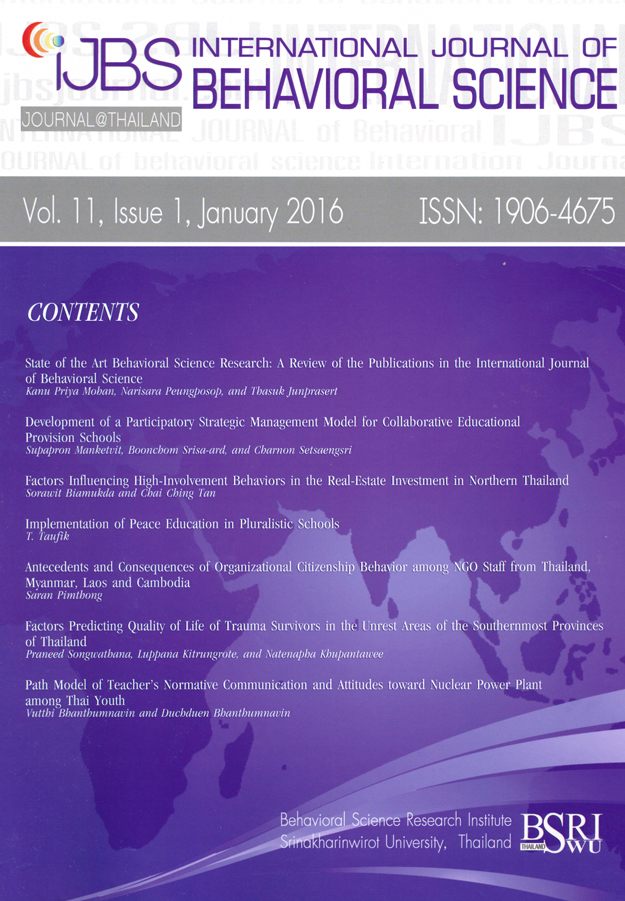Implementation of Peace Education in Pluralistic Schools
Main Article Content
Abstract
The purpose of this study was to describe the peace education applied in three multi-ethnic schools. This study is a qualitative research and takes place in Surakarta, Indonesia. Data were collected through in-depth interviews. Ten teachers from pluralistic schools in Surakarta participated in this research. The results show: firstly that the concept of peace education is integrated in curriculum. There are certain steps to integrate peace values into curriculum, namely: understanding history background social conflict in Surakarta, identifying conflict potentials among ethnic groups, implementing need assessment, deciding the objectives, preparing action plan, running program, monitoring program, and giving evaluation. Secondly, the schools should organize special activities to promote mutual understanding between Javanese and Chinese students, including: making multi-ethnic study groups, wearing the traditional clothe for students on certain days, exchanging gifts---where Javanese students give a special give toward Chinese students, and vice versa. Thirdly, the school system (principal, vice principal, teachers, and staff) has a significant role to support peace education, like making policy regarding to vision and mission of a pluralistic school, coordinating class teachers to make integrated curriculum and to make some supporting programs.
Downloads
Download data is not yet available.
Article Details
How to Cite
Taufik, T. (2016). Implementation of Peace Education in Pluralistic Schools. The Journal of Behavioral Science, 11(1), 45–52. https://doi.org/10.14456/ijbs.2016.4
Section
Research Articles


